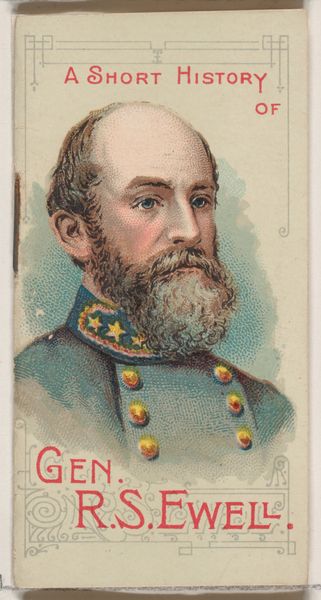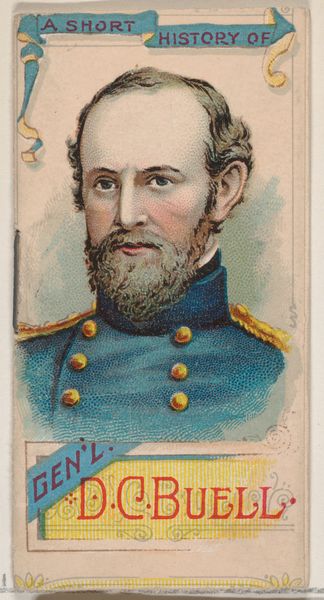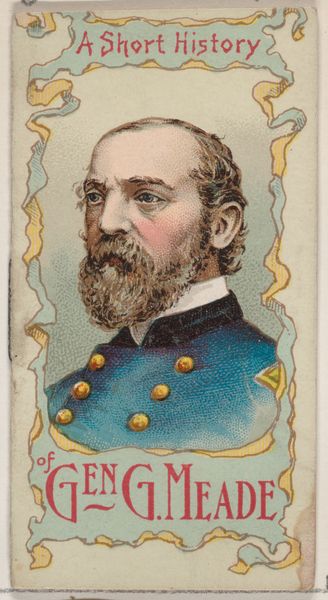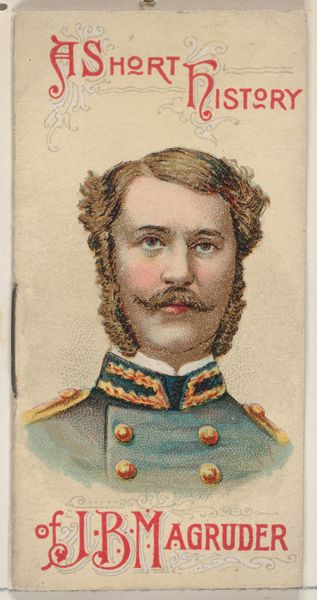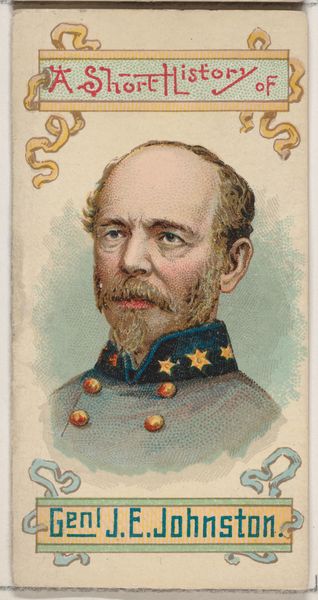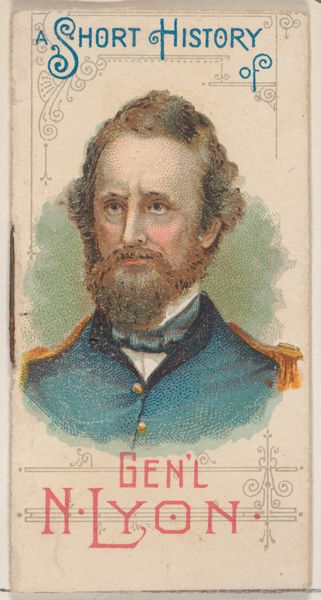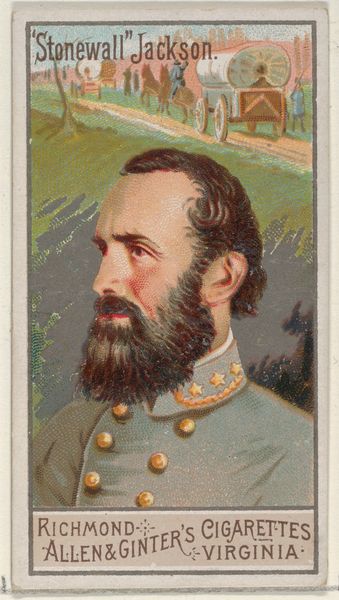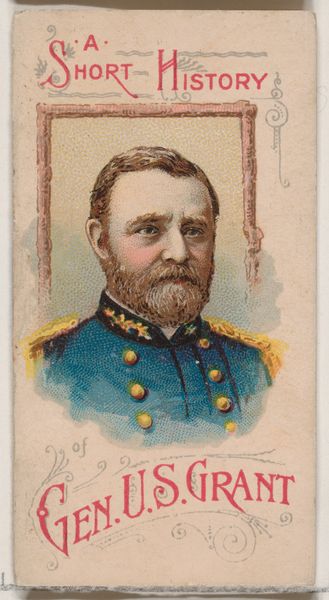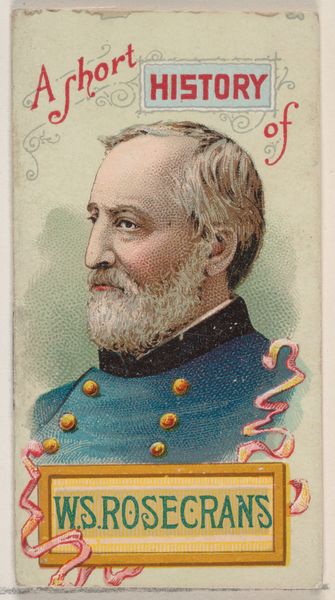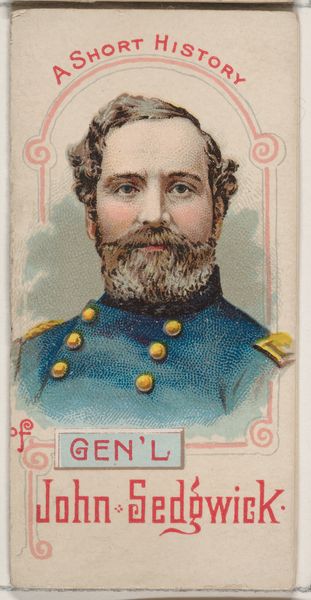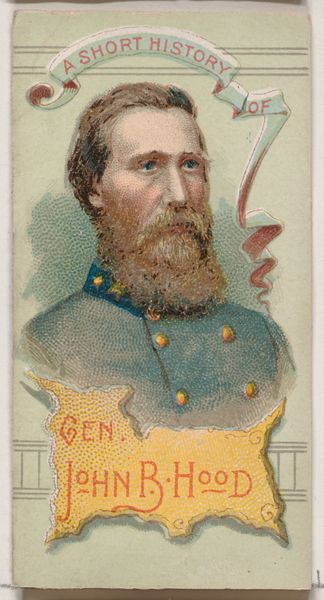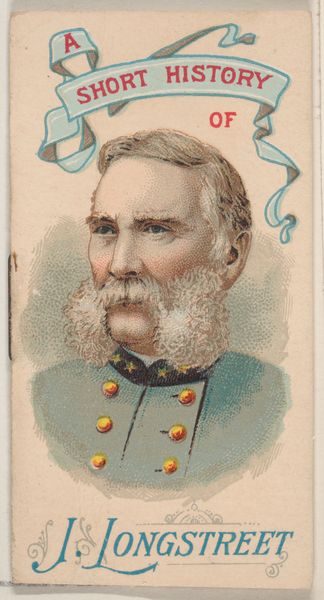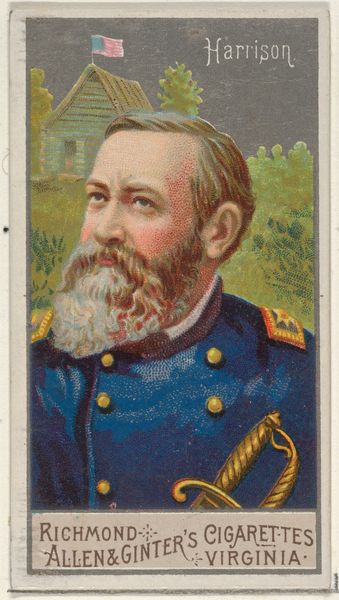
A Short History of General Thomas Jonathan Jackson, from the Histories of Generals series of booklets (N78) for Duke brand cigarettes 1888
0:00
0:00
drawing, coloured-pencil, print
#
portrait
#
drawing
#
coloured-pencil
# print
#
caricature
#
caricature
#
coloured pencil
Dimensions: Overall (Booklet closed): 2 3/4 × 1 1/2 in. (7 × 3.8 cm) Overall (Booklet open): 2 3/4 × 2 7/8 in. (7 × 7.3 cm)
Copyright: Public Domain
Curator: Alright, let's delve into this intriguing piece. Editor: This is "A Short History of General Thomas Jonathan Jackson," from 1888, part of a series of booklets for Duke brand cigarettes. It’s made with colored pencils and printed. I find it so odd to see a war figure presented almost as a caricature on what's essentially a promotional product. What stands out to you about this image? Curator: Well, immediately, I’m drawn to the context of its production. Think about it: a cigarette company, W. Duke & Sons, using images of historical figures to sell their product. The means of production are entirely driven by capitalist interests, framing history as a consumable good. Editor: That makes sense. So, the image of General Jackson is being used as a commodity? Curator: Precisely. Look at the materials—cheap colored pencils, mass-produced prints. It's not about artistic merit but accessibility and reproducibility. This image, this “history,” becomes another element in the culture of consumption. Who were they targeting with this campaign? What message were they trying to convey, beyond merely selling cigarettes? Editor: Perhaps associating their brand with notions of patriotism and heroism? But reducing history to these bite-sized booklets seems… reductive. Curator: Absolutely! Consider the social implications. This type of imagery shaped popular opinion, normalizing a particular narrative for a broad audience, a consumerist public. It speaks to how industry can influence collective memory through accessible, and easily disseminated imagery. Editor: It is fascinating to consider the materials and production process in shaping the image’s cultural significance, and its contribution to shaping memory, blurring art and commodity! Curator: Indeed. It forces us to question how materials, production, and consumption intertwine with cultural meaning and historical understanding.
Comments
No comments
Be the first to comment and join the conversation on the ultimate creative platform.
